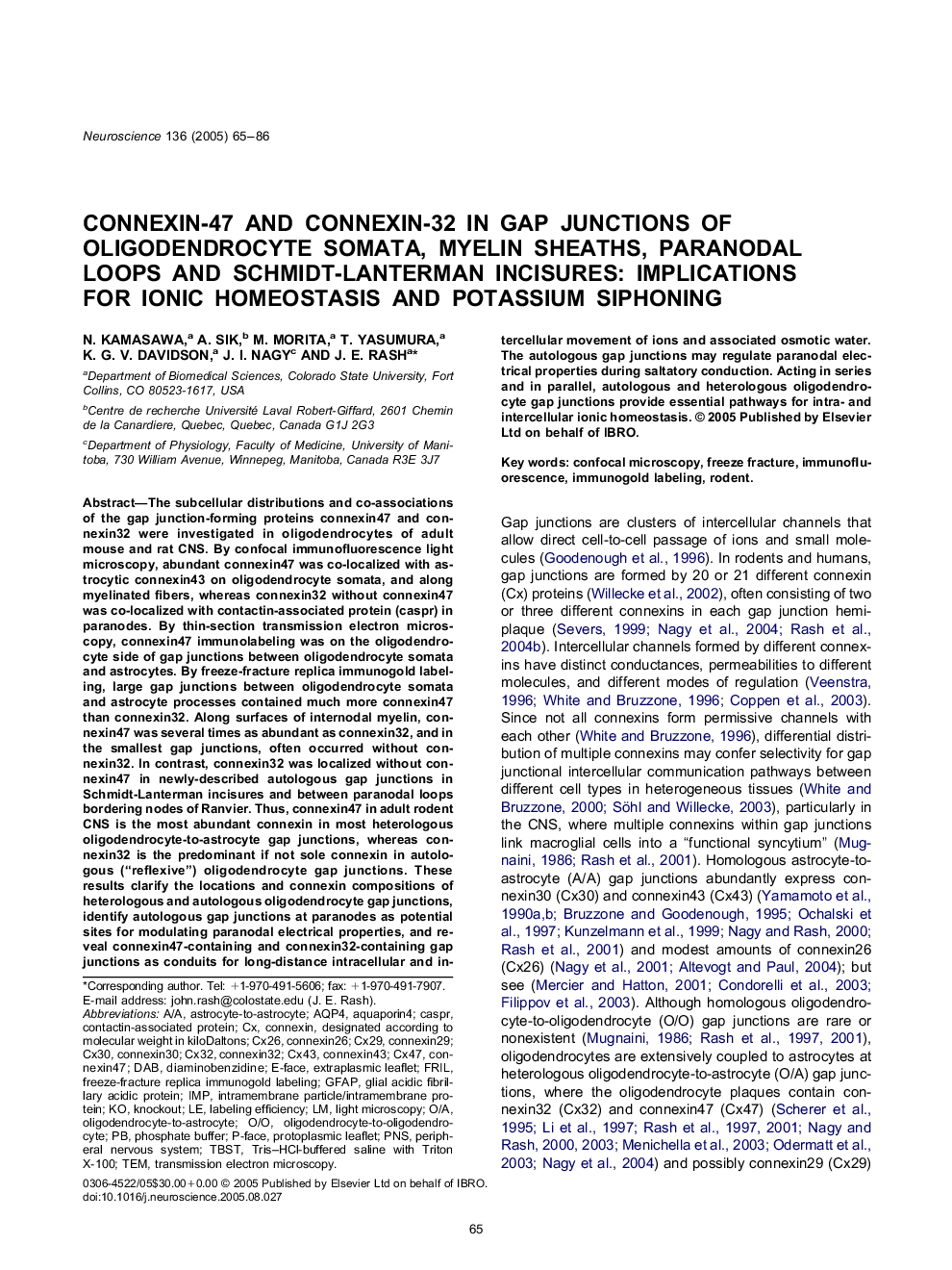| Article ID | Journal | Published Year | Pages | File Type |
|---|---|---|---|---|
| 9426216 | Neuroscience | 2005 | 22 Pages |
Abstract
The subcellular distributions and co-associations of the gap junction-forming proteins connexin47 and connexin32 were investigated in oligodendrocytes of adult mouse and rat CNS. By confocal immunofluorescence light microscopy, abundant connexin47 was co-localized with astrocytic connexin43 on oligodendrocyte somata, and along myelinated fibers, whereas connexin32 without connexin47 was co-localized with contactin-associated protein (caspr) in paranodes. By thin-section transmission electron microscopy, connexin47 immunolabeling was on the oligodendrocyte side of gap junctions between oligodendrocyte somata and astrocytes. By freeze-fracture replica immunogold labeling, large gap junctions between oligodendrocyte somata and astrocyte processes contained much more connexin47 than connexin32. Along surfaces of internodal myelin, connexin47 was several times as abundant as connexin32, and in the smallest gap junctions, often occurred without connexin32. In contrast, connexin32 was localized without connexin47 in newly-described autologous gap junctions in Schmidt-Lanterman incisures and between paranodal loops bordering nodes of Ranvier. Thus, connexin47 in adult rodent CNS is the most abundant connexin in most heterologous oligodendrocyte-to-astrocyte gap junctions, whereas connexin32 is the predominant if not sole connexin in autologous (“reflexive”) oligodendrocyte gap junctions. These results clarify the locations and connexin compositions of heterologous and autologous oligodendrocyte gap junctions, identify autologous gap junctions at paranodes as potential sites for modulating paranodal electrical properties, and reveal connexin47-containing and connexin32-containing gap junctions as conduits for long-distance intracellular and intercellular movement of ions and associated osmotic water. The autologous gap junctions may regulate paranodal electrical properties during saltatory conduction. Acting in series and in parallel, autologous and heterologous oligodendrocyte gap junctions provide essential pathways for intra- and intercellular ionic homeostasis.
Keywords
Connexin32Connexin43Connexin30Connexin26Cx30Cx26TBSTIMPAQP4Cx32Aquaporin4CX43GFAPfreeze-fracture replica immunogold labelingDABImmunofluorescenceTemphosphate bufferImmunogold labelingRodentdiaminobenzidineLabeling efficiencyperipheral nervous systemFreeze fractureFRILTransmission electron microscopylight microscopyConfocal microscopyknockoutcontactin-associated proteinPNSCaspr
Related Topics
Life Sciences
Neuroscience
Neuroscience (General)
Authors
N. Kamasawa, A. Sik, M. Morita, T. Yasumura, K.G.V. Davidson, J.I. Nagy, J.E. Rash,
